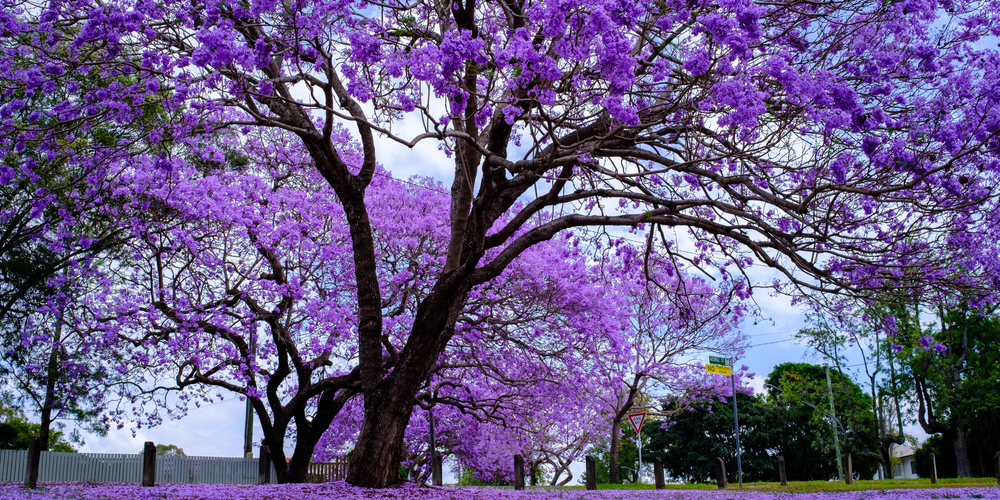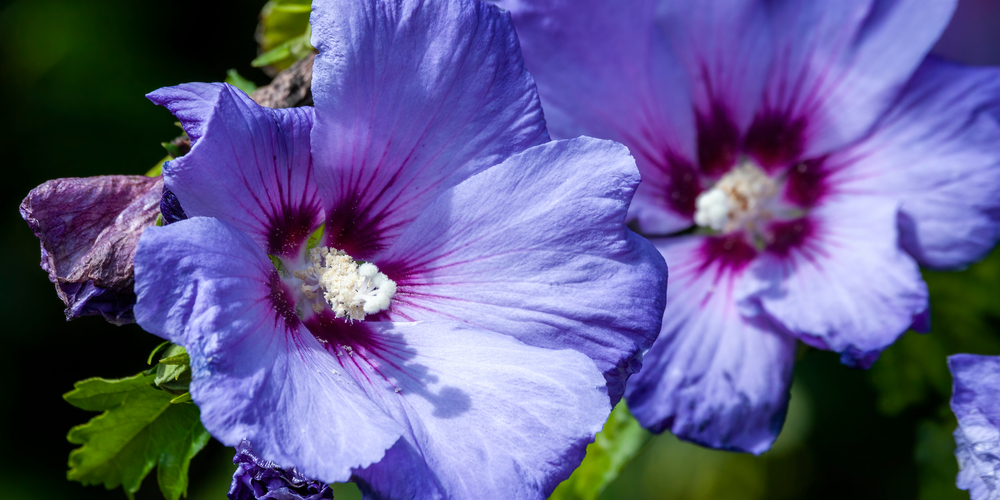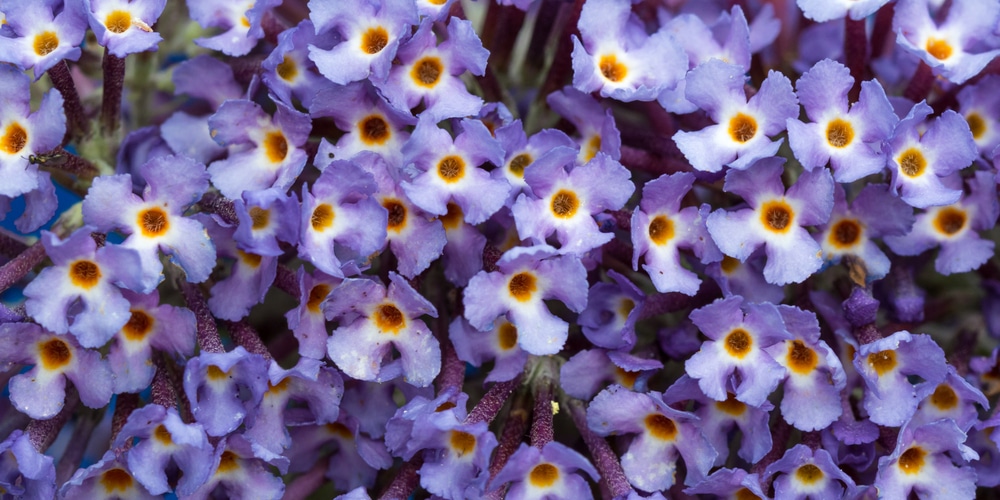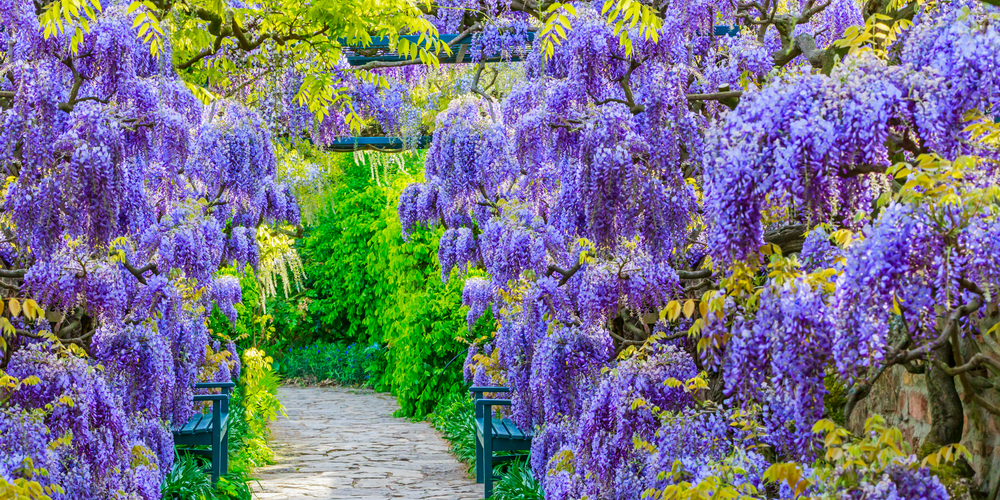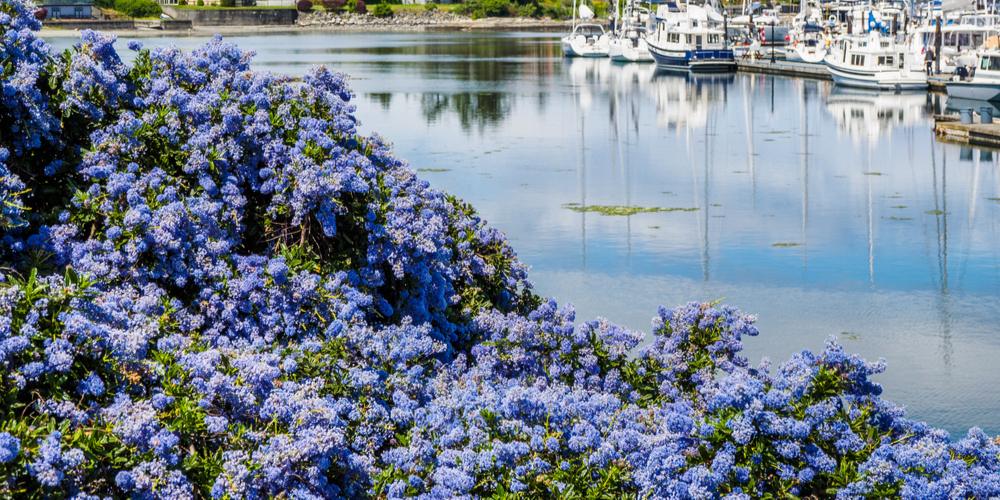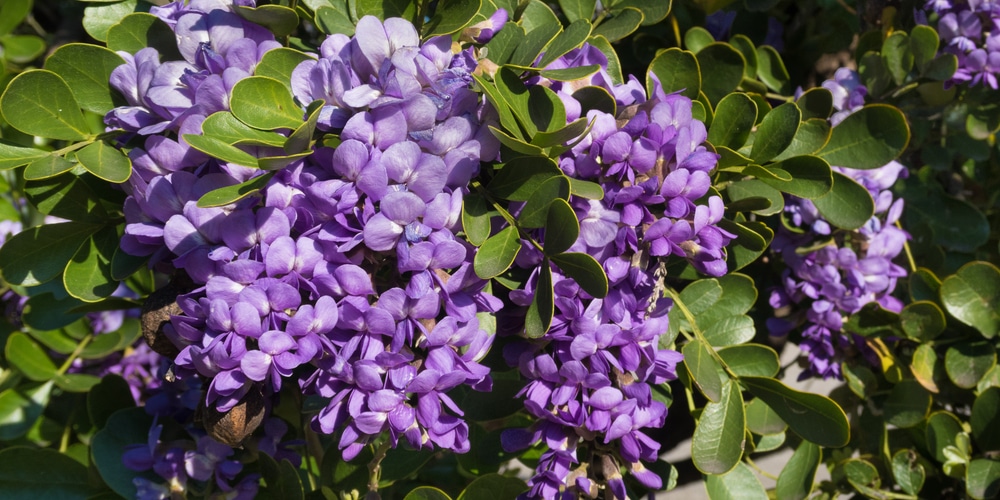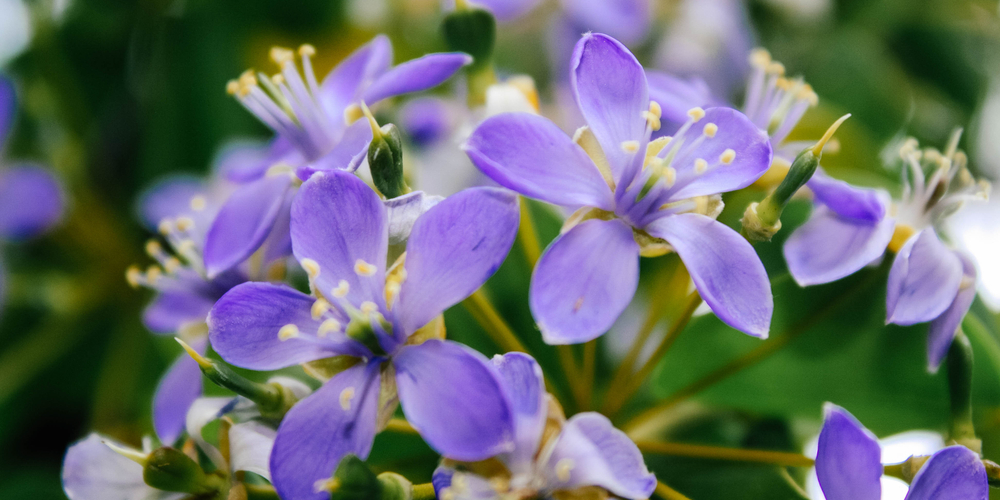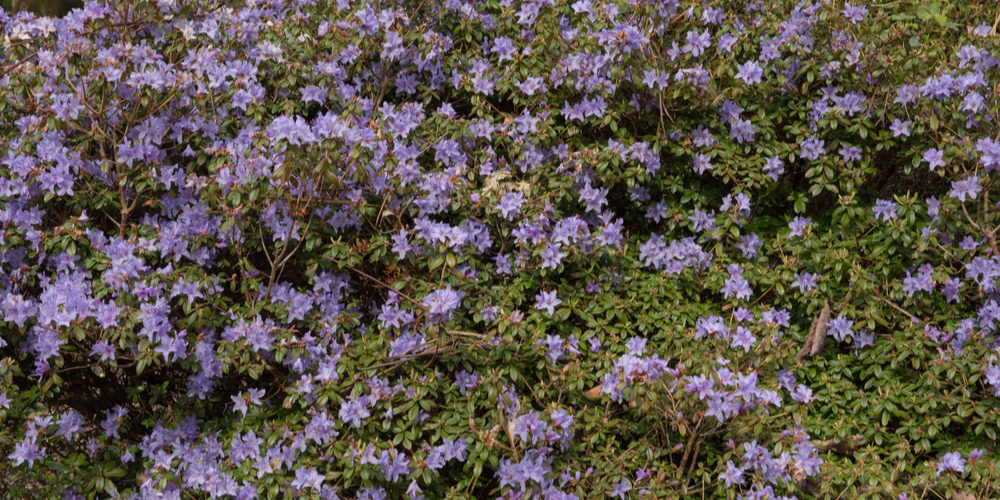Looking for trees with blue flowers? You’ve come to the right place. Below are 9 fine specimens that are worthy of space in your garden or yard.
Trees with blue flowers
Jacaranda Tree
Jacaranda is usually the first tree that comes to mind when you think of blue flowers. Jacaranda mimosifolia, otherwise known as blue jacaranda thrives in the subtropical and tropical regions in the US, particularly the south-central South America.
Dig deeper and you’ll likely find several subspecies, with shrubs and trees going anywhere from 60 to a hundred feet tall and producing grape-like blooms of blue-violet, sky blue and lavender blue.
To care for a Jacaranda you’ll need to put it in a sunny spot and give it water as soon as you see the top soil dry. It thrives in USDA zones 9 and above.
Blue Rose of Sharon
The Rose of Sharon is a favorite among homeowners and gardeners because it can grow in virtually all soil types, including clay. It loves having its roots moderately moist which means you’ll need to give it a good drink every now and then.
The Azurri Blue Satin deserves special mention as it features large and beautiful multicolored blooms with a dominant blue shade and a white center. The tree doesn’t need much in terms of nutrients to grow or produce flowers as long as you water well.
As an added bonus, Blue Satin is deer-resistant and drought tolerant. It grows in USDA zones 5 to 8, particularly in the north.
Blue Butterfly Bush
Trees with blue flowers are truly rare but there are a few that have them, including the True Blue Butterfly Bush. It can grow in zones 5 to 10 and in central and southern parts of the US.
It can serve as an accent for your landscape, with show-stopping flowers that are blue and purple. More than that, the accompanying scent is wonderful and attractive to hummingbirds and butterflies.
Butterfly bushes are extremely tolerant of weather changes and varying environments.
However, if possible you should plant them where there’s full sun. Soil media doesn’t matter as much as long as they get intermittent watering. Fertilizing is not really needed, but deadheading is recommended so you can get maximum flower count.
Blue Chinese Wisteria
Wisterias are popular flowering plants with streaming purple flowers that turn blue as it ages. Typically, most people grow them as a vining plant but it can be transformed into a tree with a single thick trunk.
You can turn your wisteria into a small tree with proper pruning and training. The blooms arrive as early as spring and last for about a month. It’s worth noting that the flowers appear first before the leaves for the Chinese species, whereas the American species will put out foliage first before flowers.
Wisterias thrive in USDA zones 5 through 9 and in both northern and southeast states. It needs direct sunlight in order to produce the mass of flowers, preferably four hours or more.
Mayan Lilac
Mayan Lilac is similar to Wisteria in flower count but has several color varieties ranging from lavender to white and of course, blue violet.
The tree can grow as high as 60 feet and above when the right conditions are met. As with all other flowering trees it’s important that you put them in bright direct sunlight and well-draining soil. Water only when the soil is dry to the touch and deeply so all the roots are fed.
Mayan Lilac is not native to the US but grows in Mexico, Honduras and Guatemala.
Lavender
Lavender is a shrub that’s very useful in the garden and kitchen- its blue lavender flowers can be used as potpourri, and there’s seemingly no end to the blooms once they begin.
English lavender is arguably the most popular and thrives in USDA zones 5 through 8. It comes from Mediterranean shores and might not survive a zone 5 winter. However, there are cold-hardy varieties so you can still get that blue pop in the summer.
The shrub is drought tolerant and can handle a missed watering schedule or two. Plant it where it gets full sun for the most abundant and fragrant blossoms.
Texas Mountain Laurel
Small yet very showy and not afraid to put out a display of colors, the Texas Mountain Laurel is sure to be the focal point of your landscape.
You can put it in limited spaces, which makes it the perfect tree for small yards. It grows well in Texas and similar regions such as New Mexico and Mexico. The evergreen species tend to keep its leaves all year round as long as it doesn’t experience too cold a temperature.
Texas Mountain Laurels are slow growers but they do produce bright and beautiful flowers with a sweet scent. Those in desert climates can grow it successfully and with little to no problems.
Lignum Vitae
Loosely translated as ‘tree of life’, Lignum Vitae is rare and harvested for its wood. It comes from the Mediterranean regions and is the national flower of Jamaica. In the US, those in the Keys and Miami should be able to plant and care for the tree for a long time.
The slow-growing tree springs to life with powdery blue blooms come late winter and spring, as well as summer if it likes the condition. Depending on availability you can get either the palo santo or the common species.
Rhododendrons
Rhododendrons are nearly the same species as azaleas but they produce larger leaves and grow bigger than their counterparts. In the right climate, they are considered evergreens and produce stunning blue flowers all season long.
Several notable species include the Blue Diamond for its blue-lavender flowers in summer and spring (grows in zones 7 through 9) and Bob’s Blue, with its blue flowers and hardiness in zones 7 to 9.
Rhododendrons are native to North America and in Australia and Asia. Depending on where you live you can get either the deciduous or evergreen variety. They also love moist soil and frequent watering.
Related Article: 6 Great Zone 10 Flowering Trees
